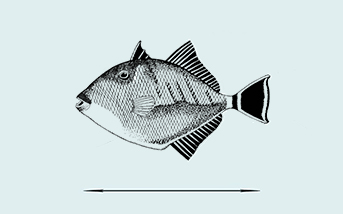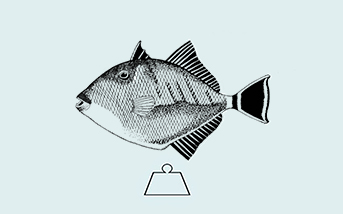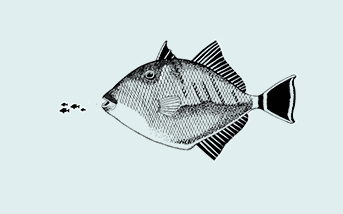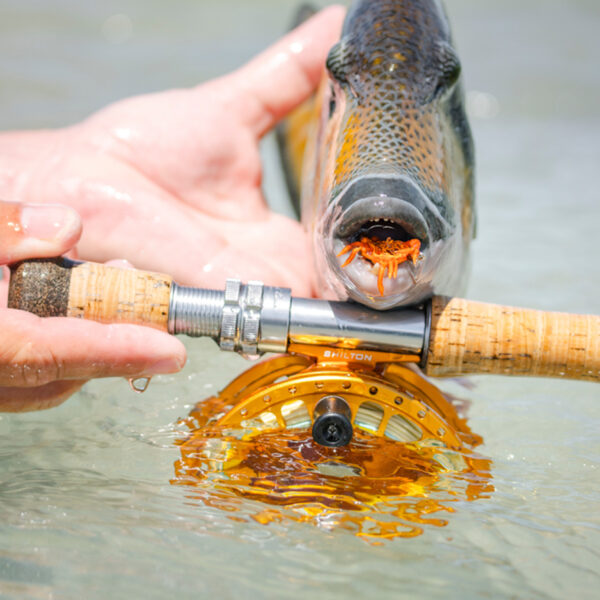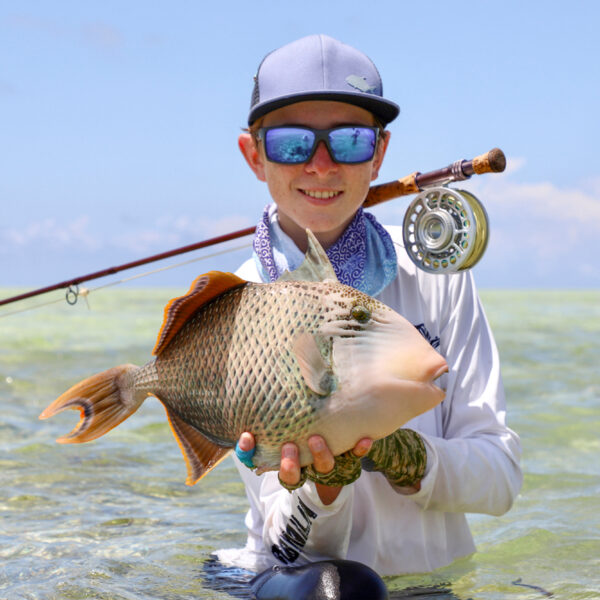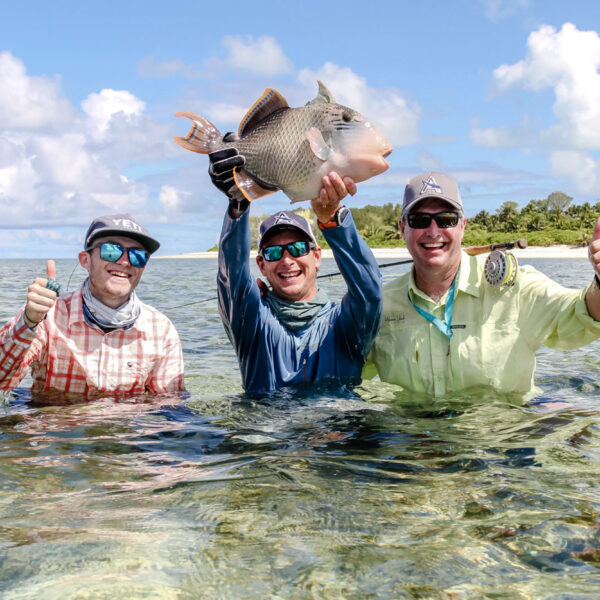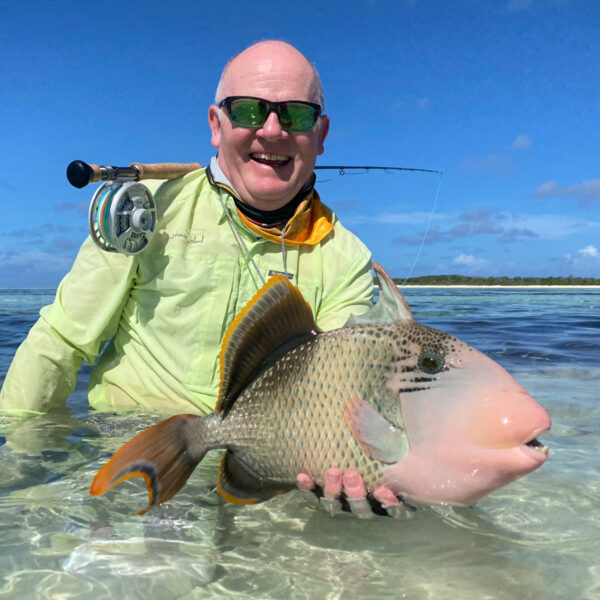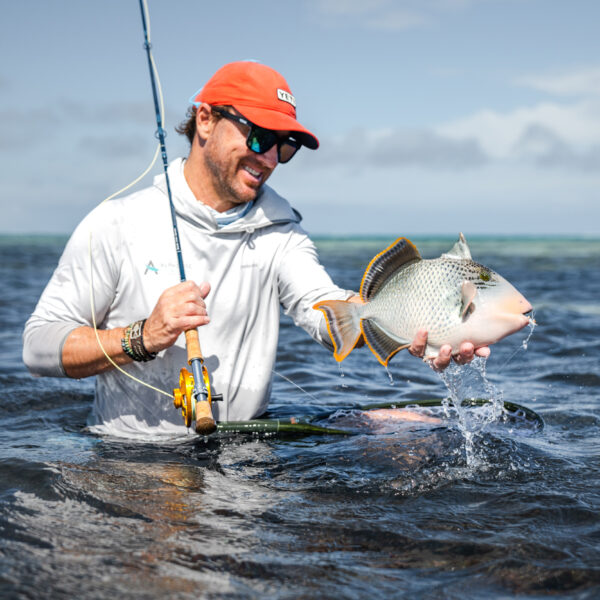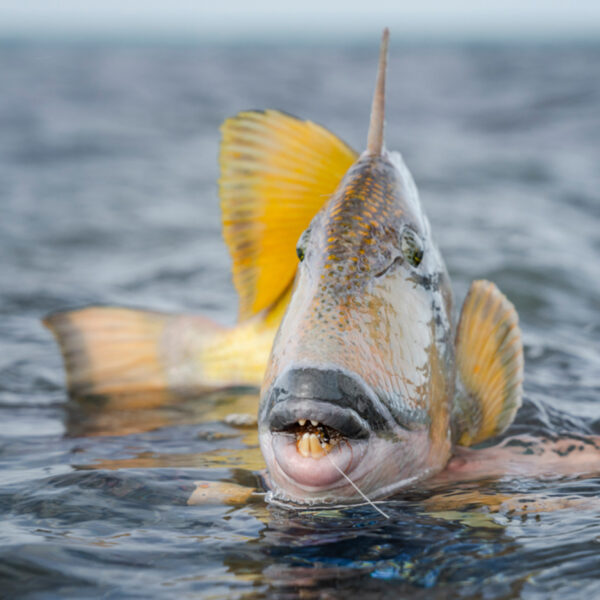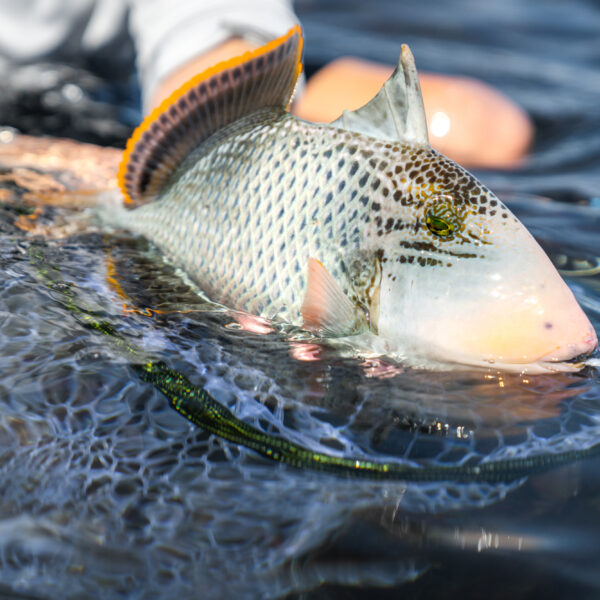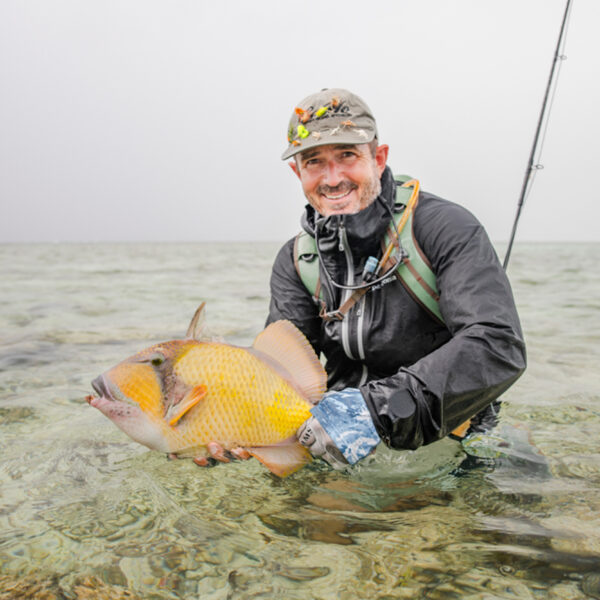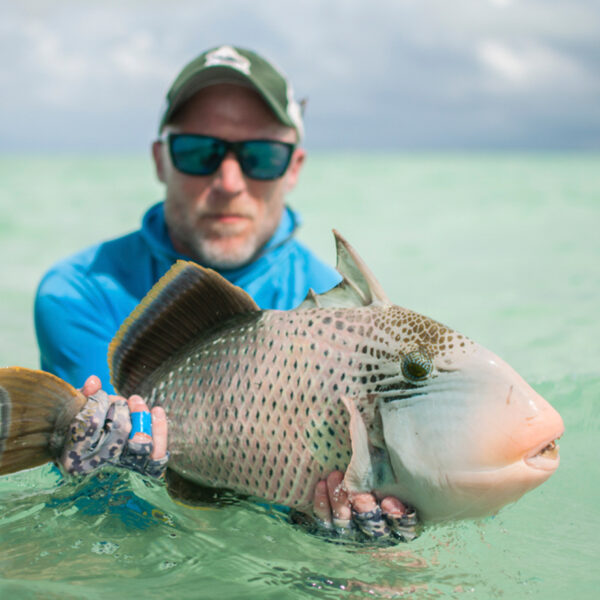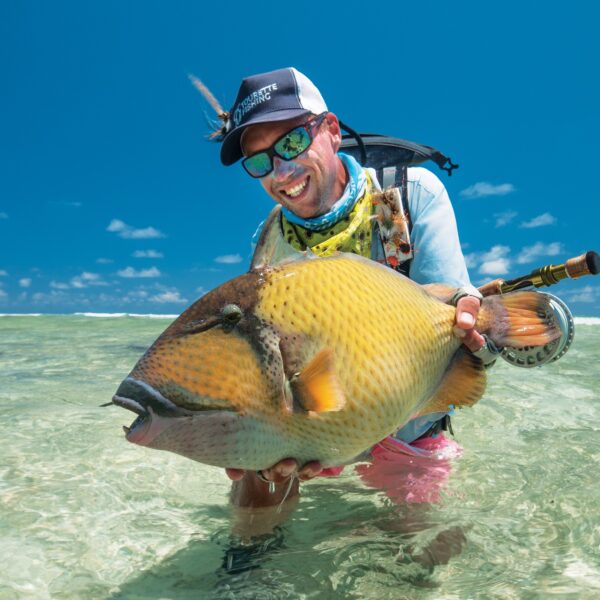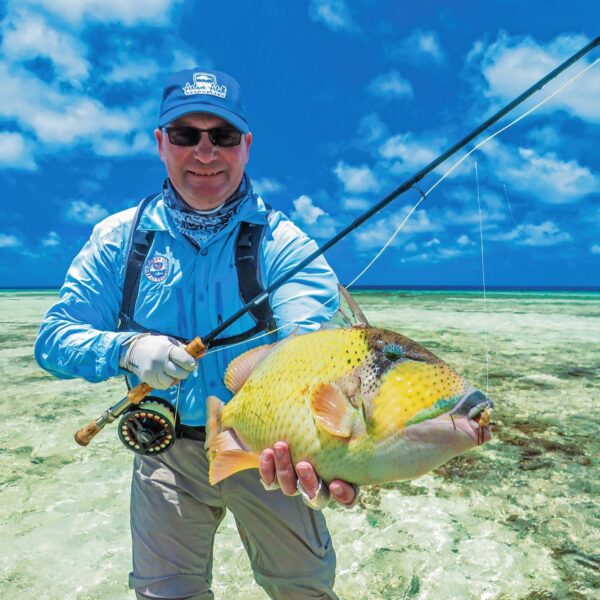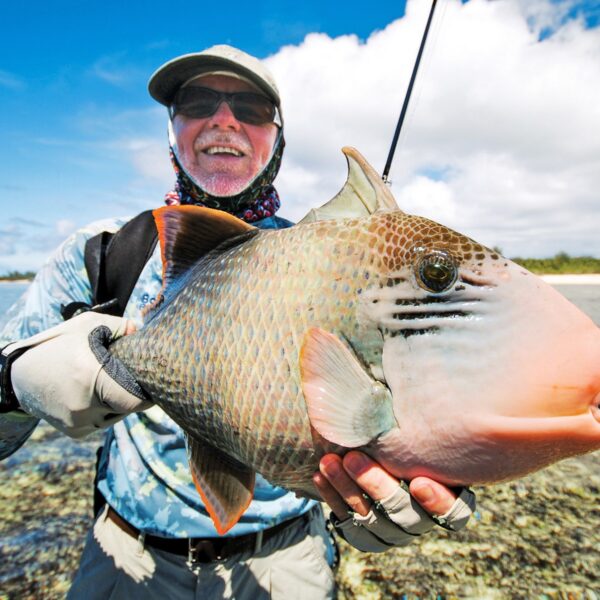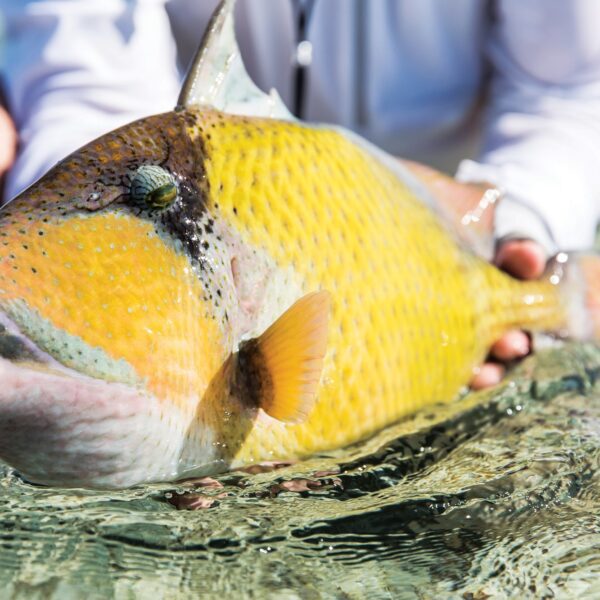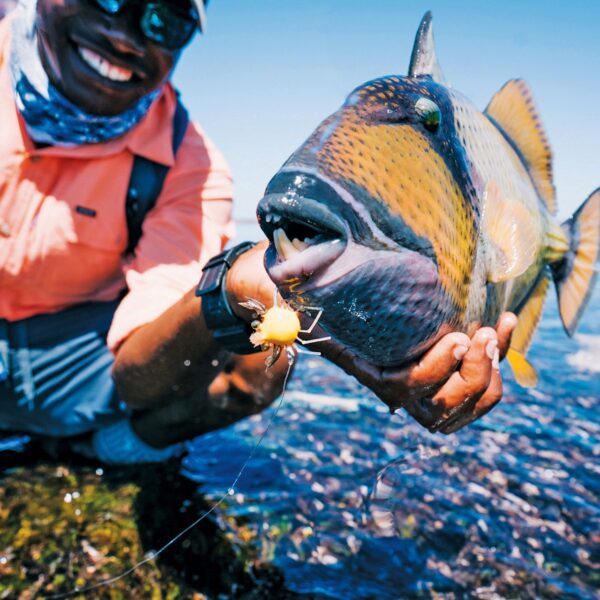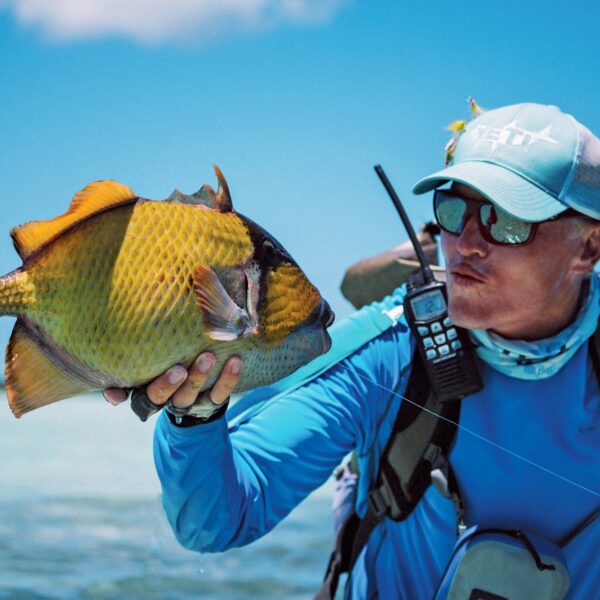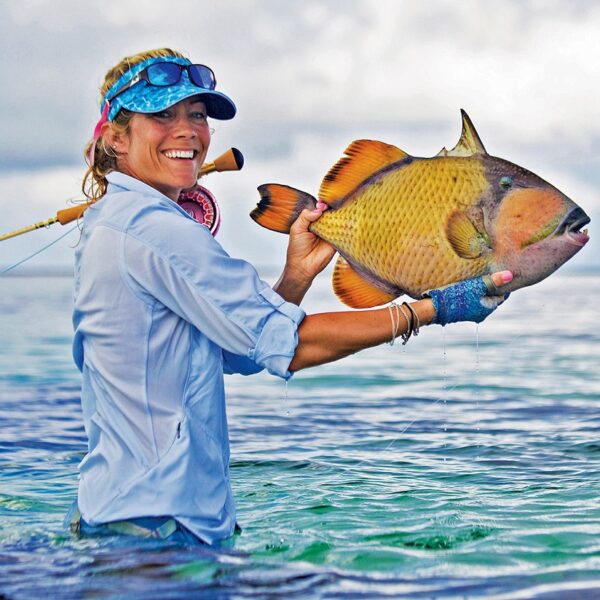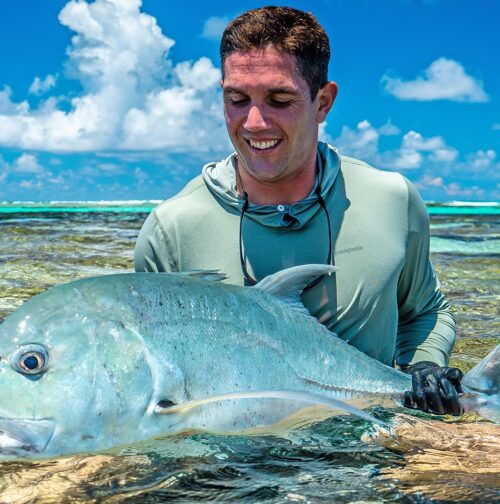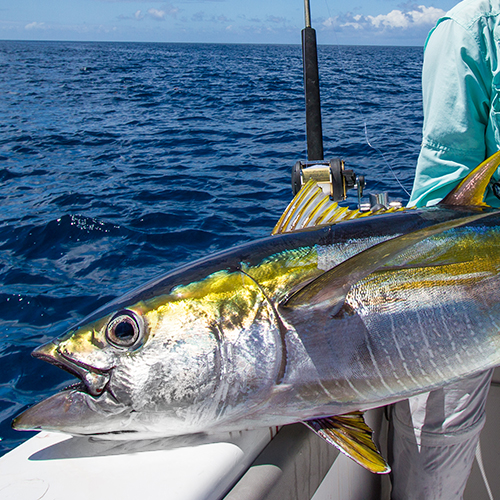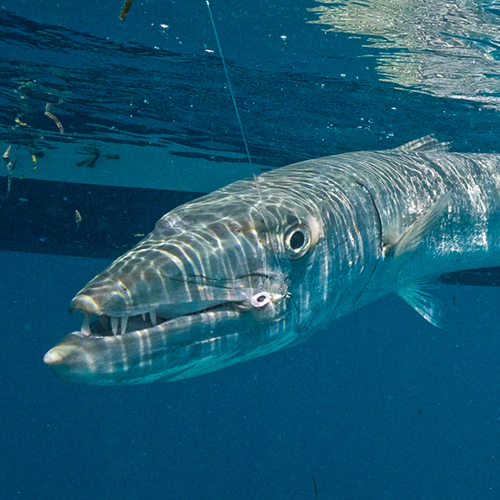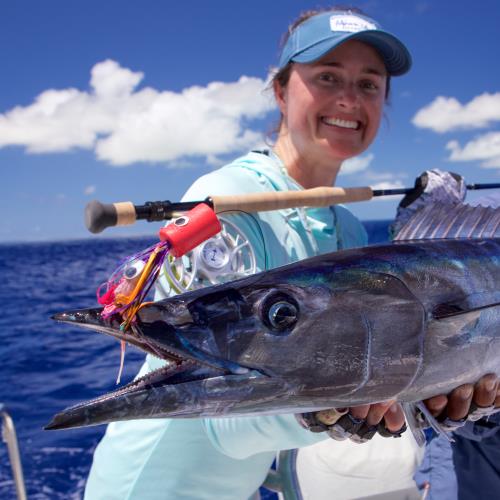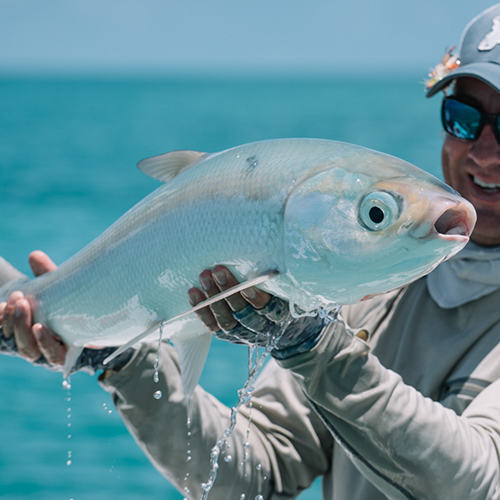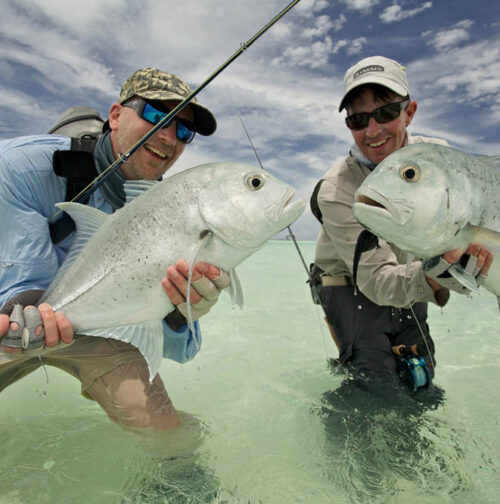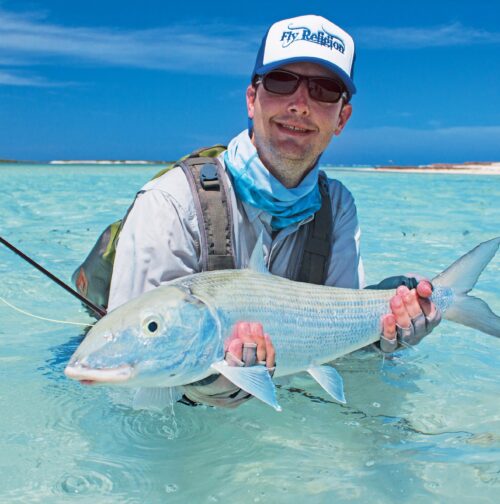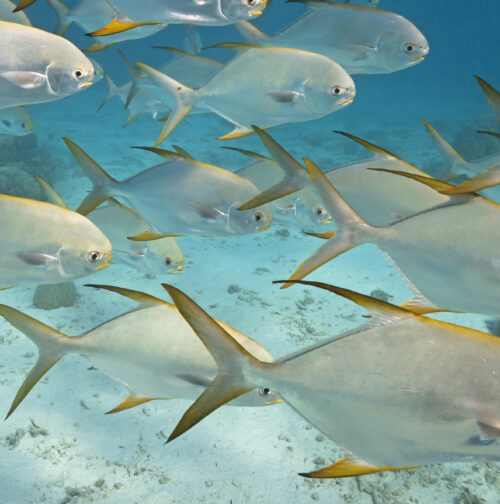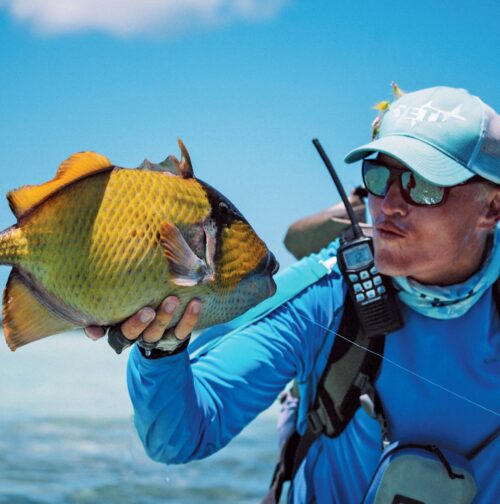Here are two flies that will always be in our guides’ fly boxes.
New Travel Regulations and Last Minute Availability
As of the 25th of March, Seychelles is welcoming guests from everywhere in the world, regardless of their vaccination status. The only requirement is a negative PCR test within 72 hours of departure, as well as a Health Travel Authorisation. Enjoy this opportunity to truly get away from the crowds and experience the blissful isolation offered by our destinations in the Outer Islands of Seychelles.
New Travel Regulations and Last Minute Availability
As of the 25th of March, Seychelles is welcoming guests from everywhere in the world, regardless of their vaccination status. The only requirement is a negative PCR test within 72 hours of departure, as well as a Health Travel Authorisation. Enjoy this opportunity to truly get away from the crowds and experience the blissful isolation offered by our destinations in the Outer Islands of Seychelles.

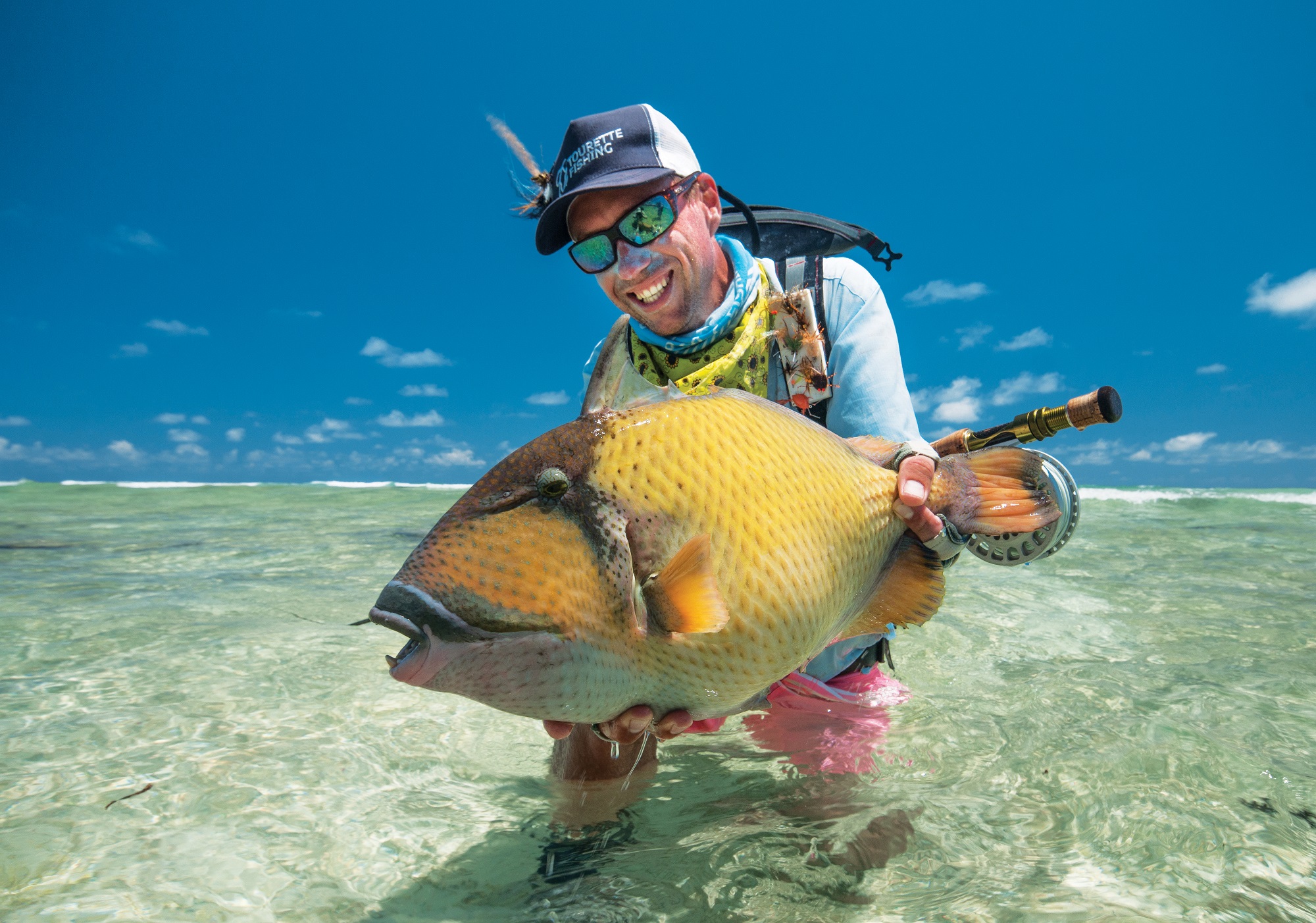
Triggerfish Fly Fishing
There are three main species of triggerfish that we fly fish at Alphonse Fishing Company: the yellow margin triggerfish, the moustache triggerfish, and the Picasso triggerfish; all are equal in beauty and challenge!
Moustache Triggerfish
The moustache triggerfish (Balistoides viridescens) is the most commonly caught of these. It’s appropriately named as it boasts a very prominent dark line above its top lip. The rest of the body is mostly yellow with orange fins edged with black lines.
Yellow Margin Triggerfish
The yellow margin triggerfish (Pseudobalistes flavimarginatus) comprises an array of colours. It has a tan body with dark spots, orange margins in the fins, and a pale orange snout and cheeks.
Picasso Triggerfish
The Picasso triggerfish (Rhinecanthus aculeatus) might be the smallest out of the three but definitely tips the scale in the looks department with its striking yellow-lined lips, electric blue forehead, and black and white markings along the body.
KEY FACTS ABOUT TRIGGERFISH
The search for triggerfish
The type of triggerfish found in Seychelles prefers the shallow coral reefs and flats. The yellow margin triggerfish prefers sandy-bottomed areas close to patches of turtle grass and coral. It is also common to find a yellow margin close to a large coral “bommie” situated on a white sandy flat.
At the same time, both the moustache and Picasso triggerfish inhabit more reef-like bottoms filled with corals and seaweed.

Best Triggerfish Flies
-
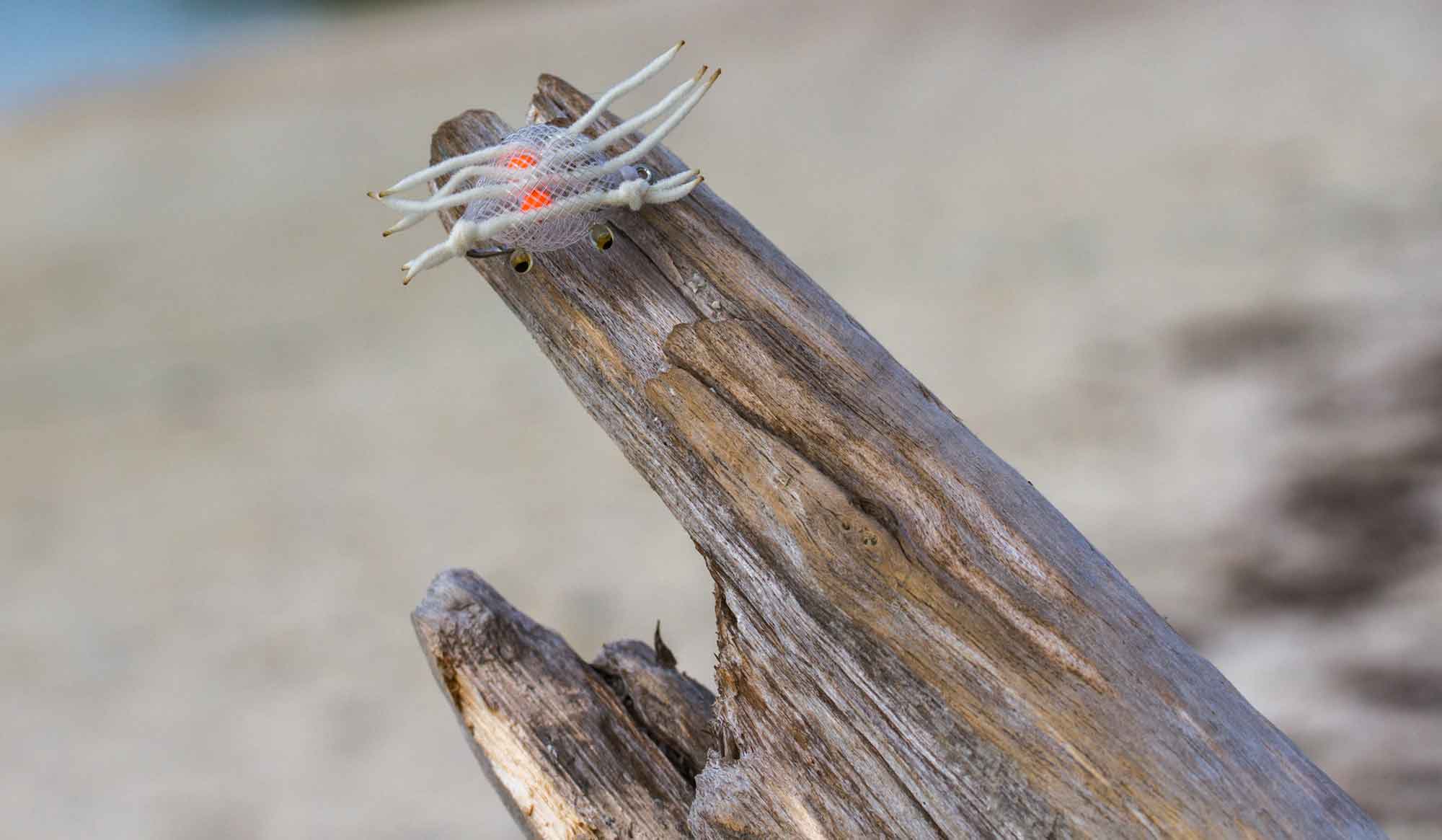
Alphlexo Crab Fly
The Alphlexo Crab Fly is a very realistic crab-like pattern. It also has a relatively solid and rigid profile/structure to further fascinate the triggerfish once it has been pounced on. A general rule of thumb is to use olive or tan colours when fishing darker bottoms and white or lighter colours when fishing over sandy bottoms.
 available On Island
available On Island
-
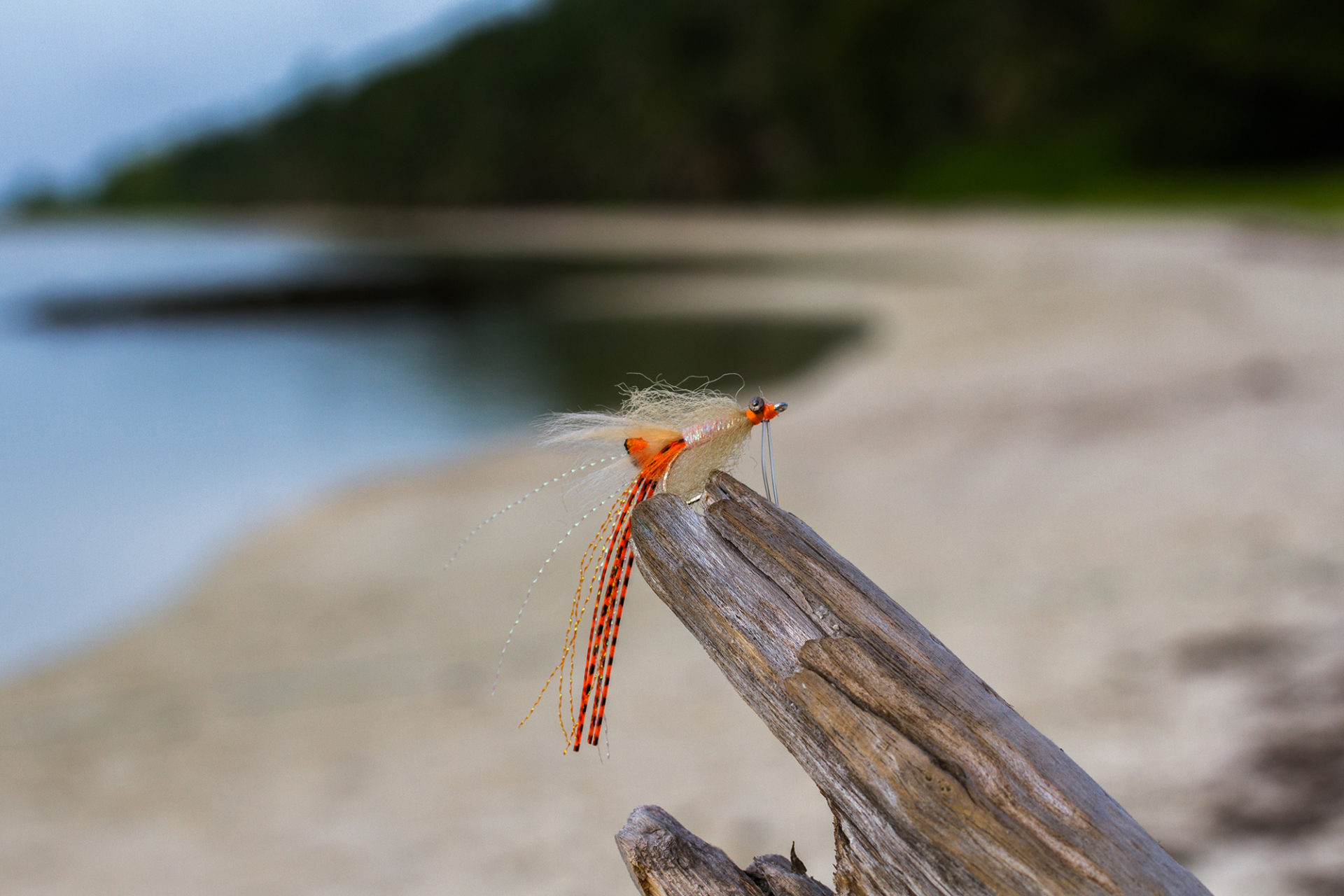
Spawning Shrimp Fly
The Spawning Shrimp fly has been around for ages for a reason – it works! It can be tied in various colours and weights. A Spawning Shrimp tied with lightweight bead chain eyes is ideal for super shallow tailing triggers. This also makes for a more delicate presentation when targeting these skittish fish.
 available On Island
available On Island
-
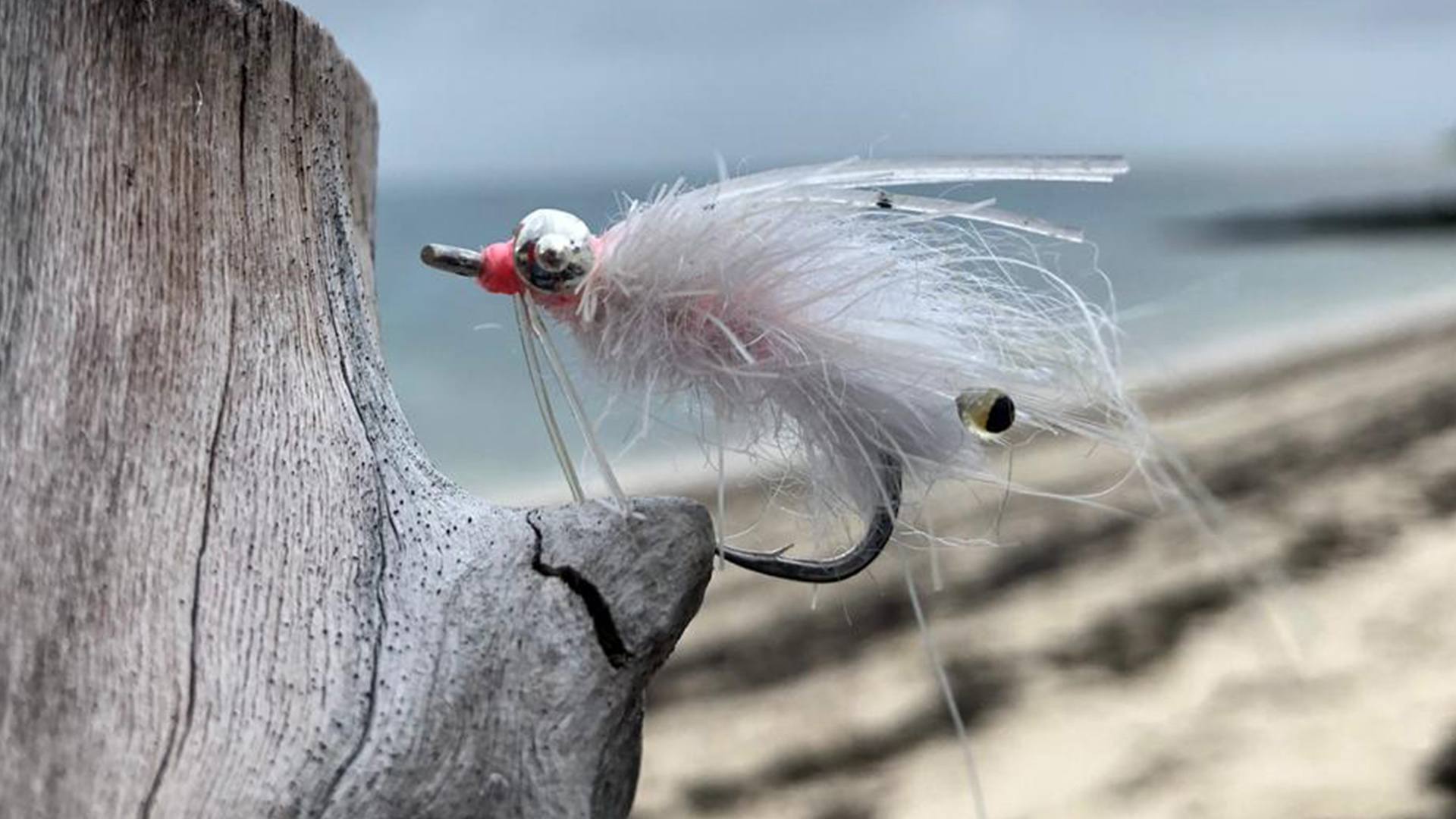
Kraken Crab Fly
The Kraken Crab Fly doesn’t imitate a specific creature but rather an array of different crustaceans found in and around turtle grass, coral patches, and white sand. Common colours are olive, dark brown, tan, and white. The rule of thumb is to fish a dark fly over a dark bottom and lighter colours over lighter bottoms.
 available On Island
available On Island
Best Triggerfish Rod Set Up
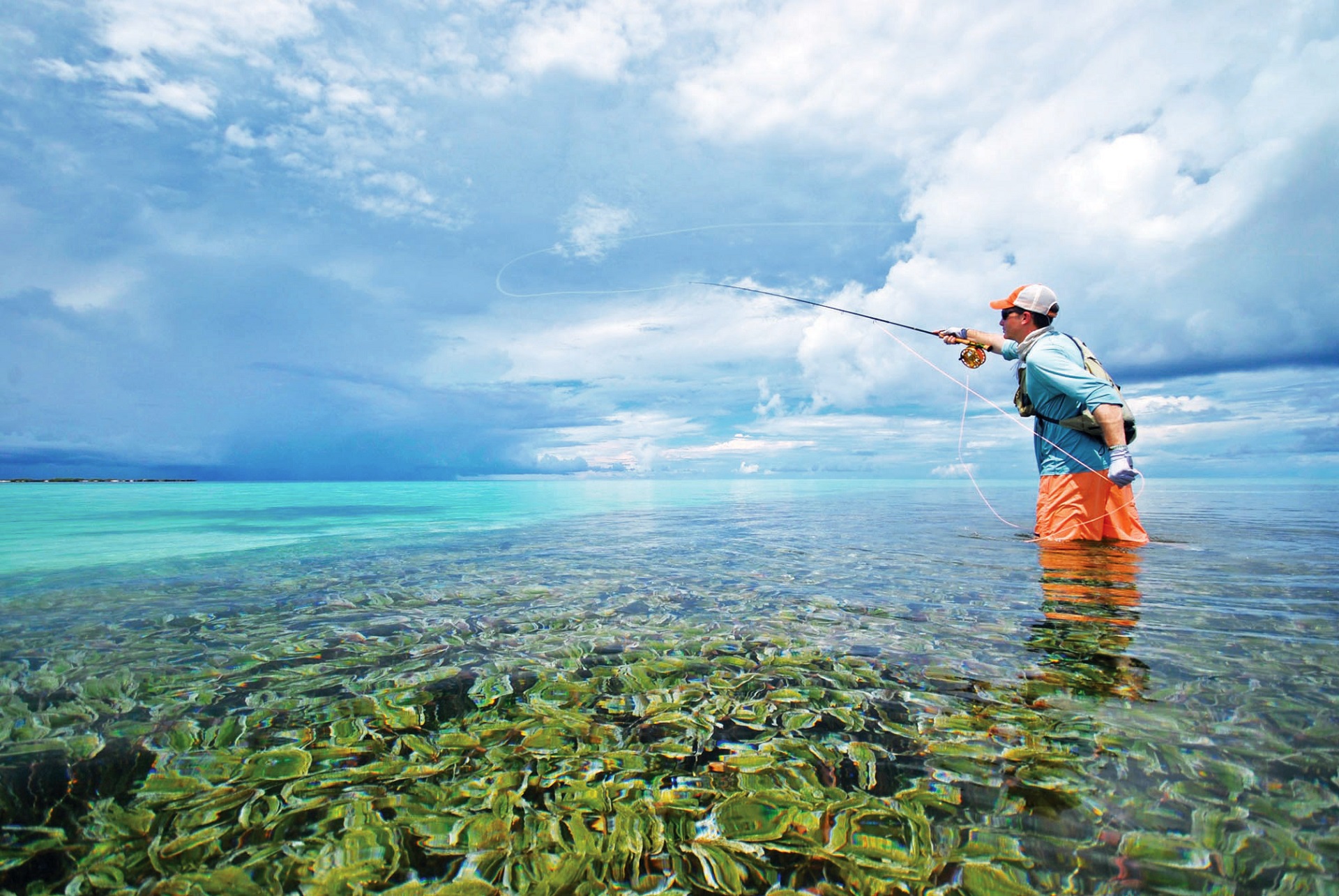
Best Tides For Triggerfish
Triggerfish are not afraid of shallow water. This makes them extremely desirable to fly fishermen, and the allure of targeting feeding and tailing fish is very appealing. Accordingly, the best tides to target triggers are around the low tide cycle.
Targeting triggers directly over the Neap Tide cycle can be tricky as the water level will not be low enough, whilst the opposite will happen during the Spring Tide cycle as the water will drop too quickly off the flats and race back on when the tide turns, making your window of opportunity to target them very short.
The best time would therefore be two to three days before or after Spring Tide.
MAKING THE CATCH
Triggerfish are notoriously skittish, partly because they feed in such shallow water. All of this makes approaching them quite challenging and extremely frustrating at times. There are three things you need to catch one of these: A Stealthy, Quiet Approach You know your own casting capabilities, so if you know, you can reach, stop and make the cast. Getting unnecessarily close will most likely spook off the fish. Make Your First Cast Count Presenting too close will frighten the fish. Presenting too far away will result in the fish not seeing the fly. An accurate, aggressive cast is required. A Bucket Load of Luck Following all the rules, doesn’t guarantee you a trigger. They can be incredibly tricky at times, hence the nickname ‘Tricky Triggers’!
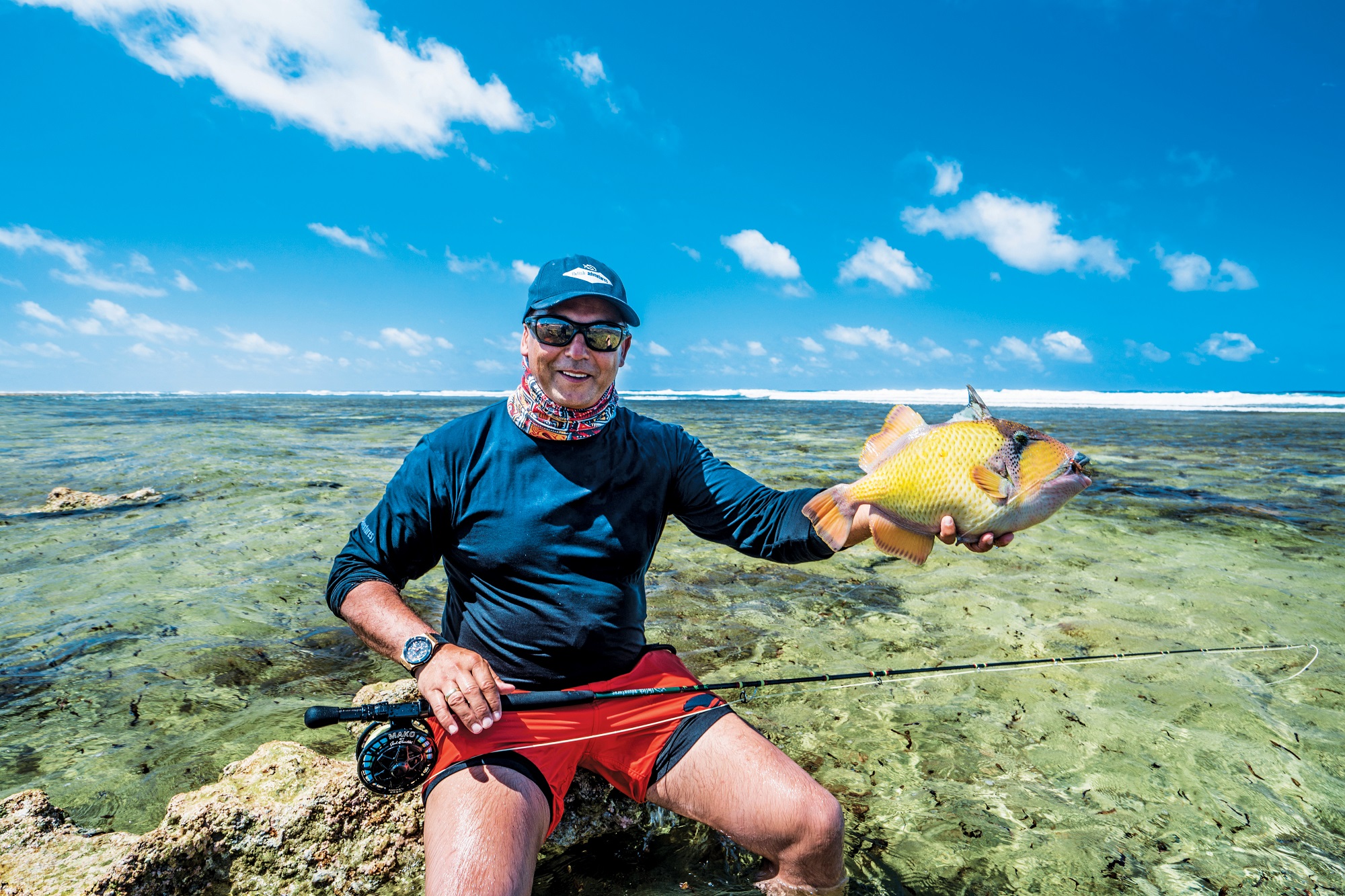
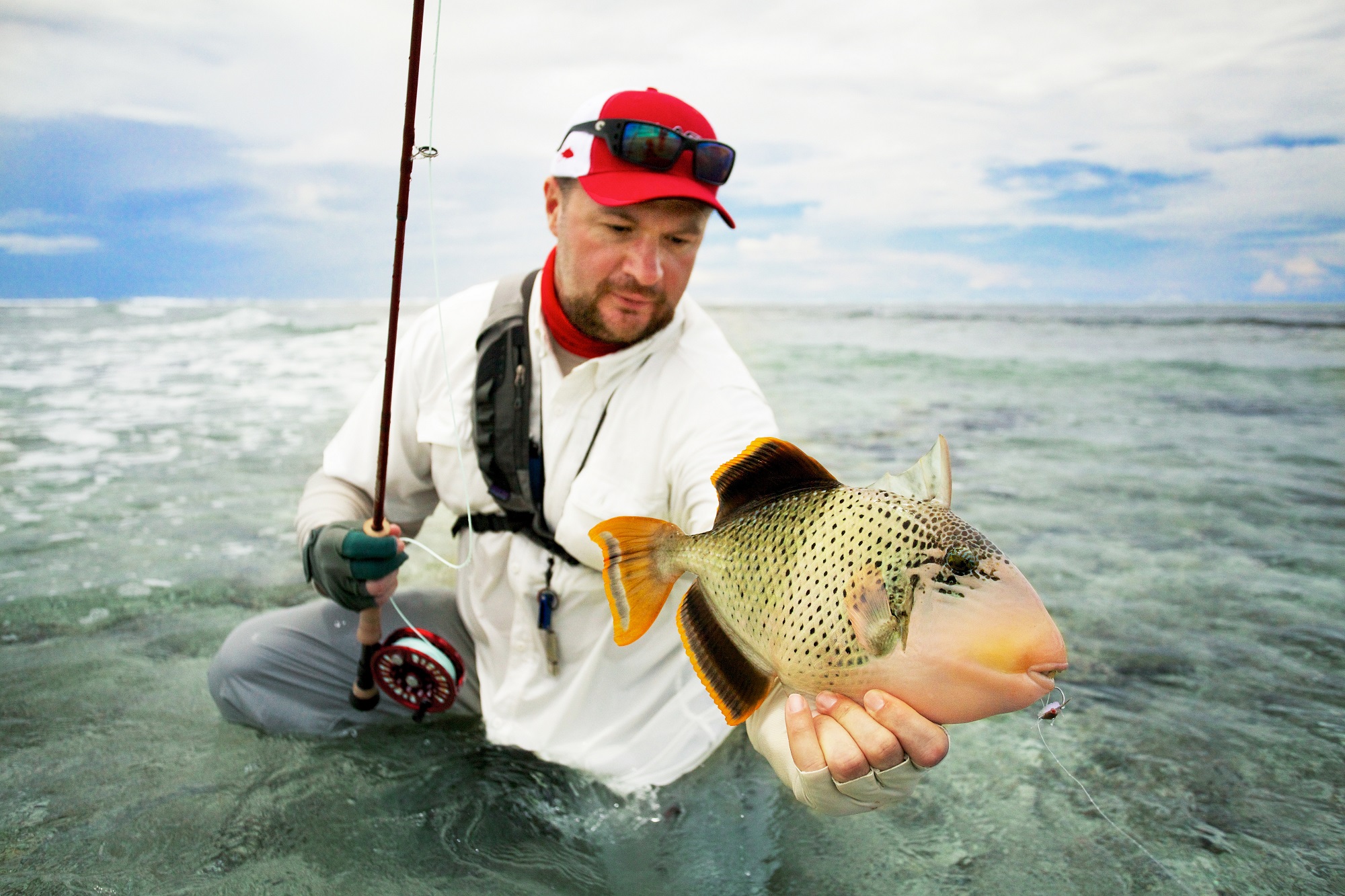
Past triggerfish catches with Alphonse Fishing Co™
"This was my dream catch, she was huge and put up a heck of a fight." - Craig Williams
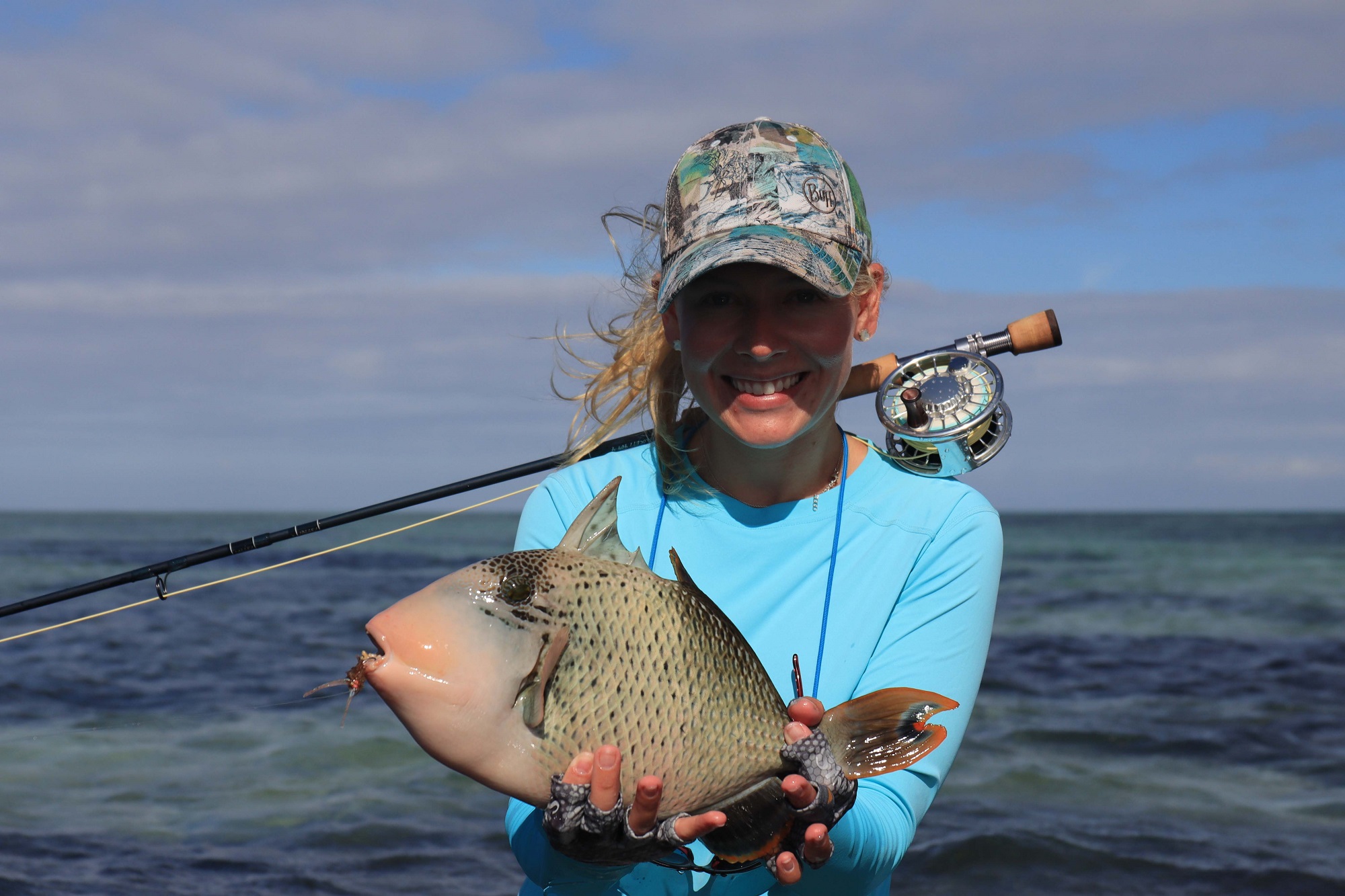
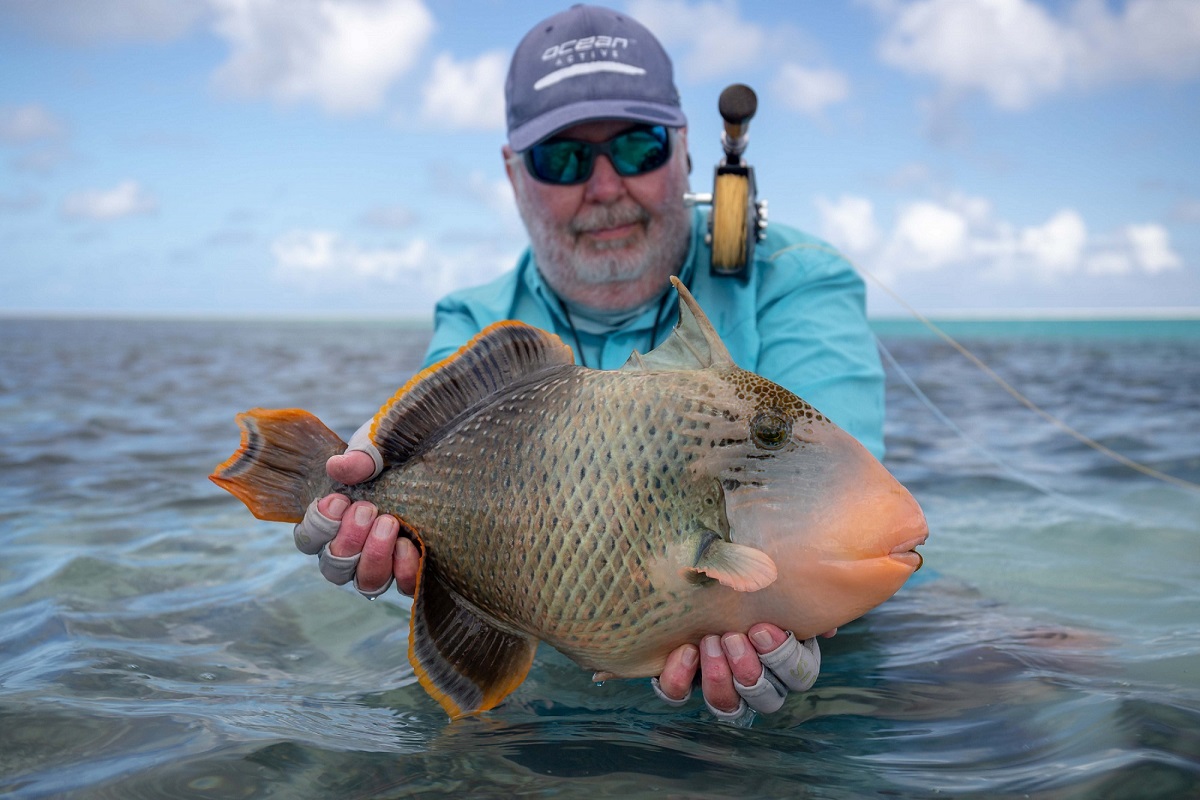
The ultimate saltwater fly fishing destinations
-
Alphonse Atoll
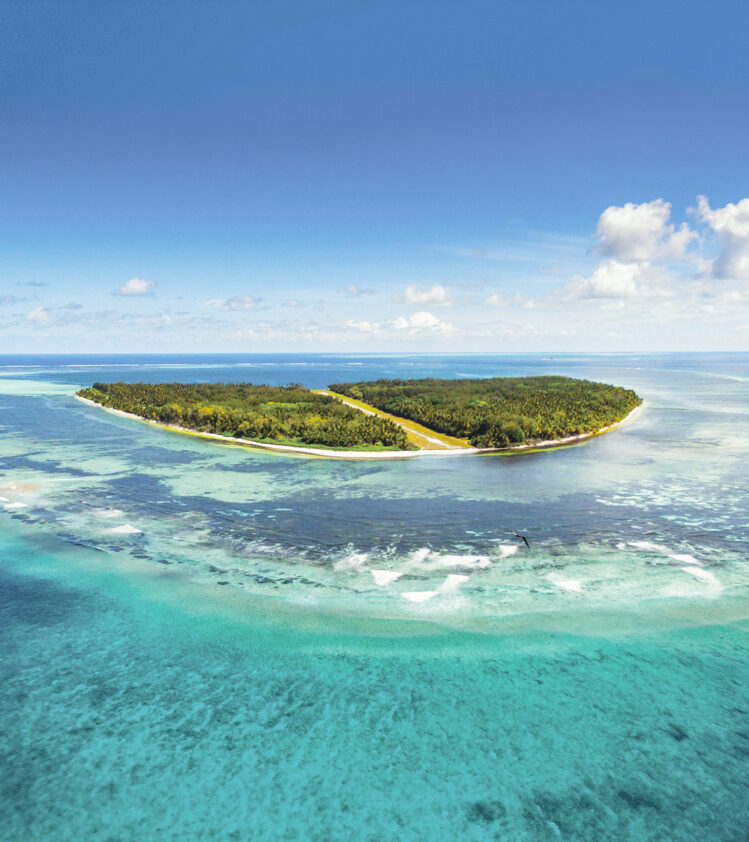 View Destination
View DestinationAlphonse Atoll
Three atolls and islands called Alphonse, Bijoutier and St Francois.
-
Cosmoledo Atoll
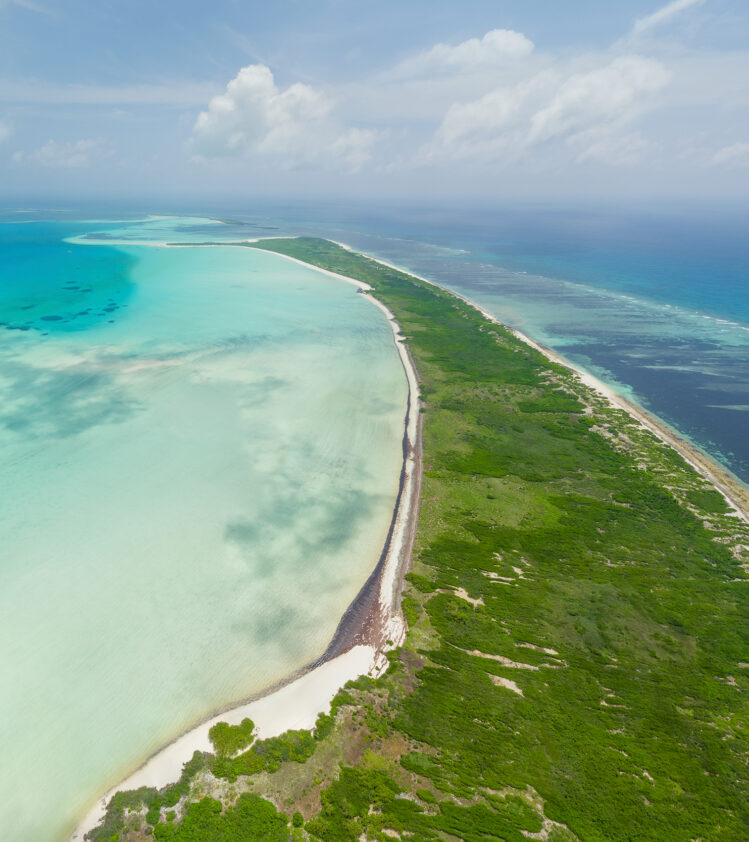 View Destination
View DestinationCosmoledo Atoll
One atoll with a vast lagoon surrounded by nineteen islands.
-
Astove Atoll
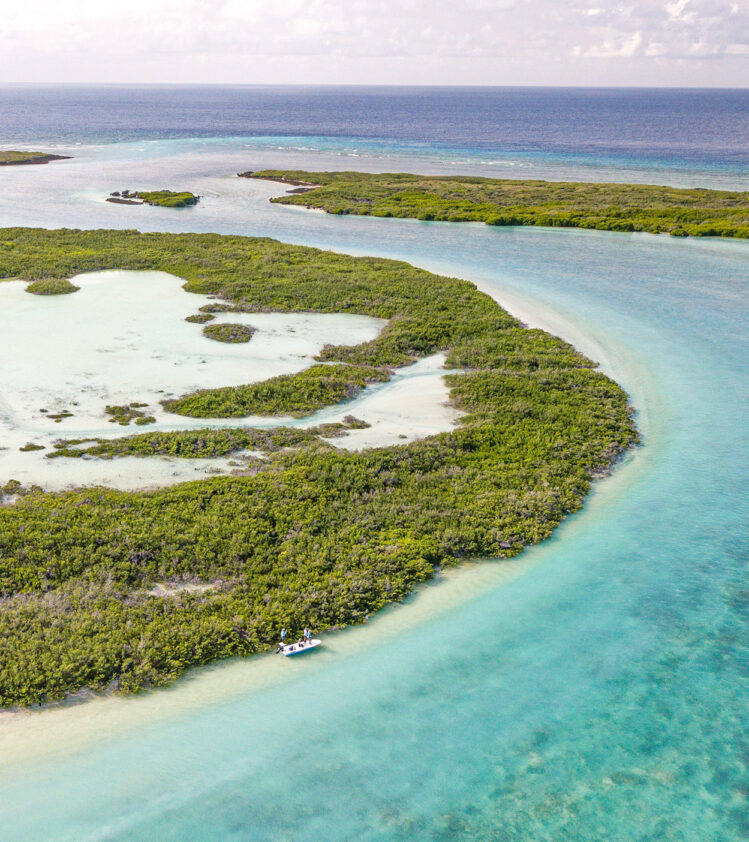 View Destination
View DestinationAstove Atoll
One atoll with an enclosed lagoon surrounded by flats and sheer drop offs.
-
Farquhar Atoll
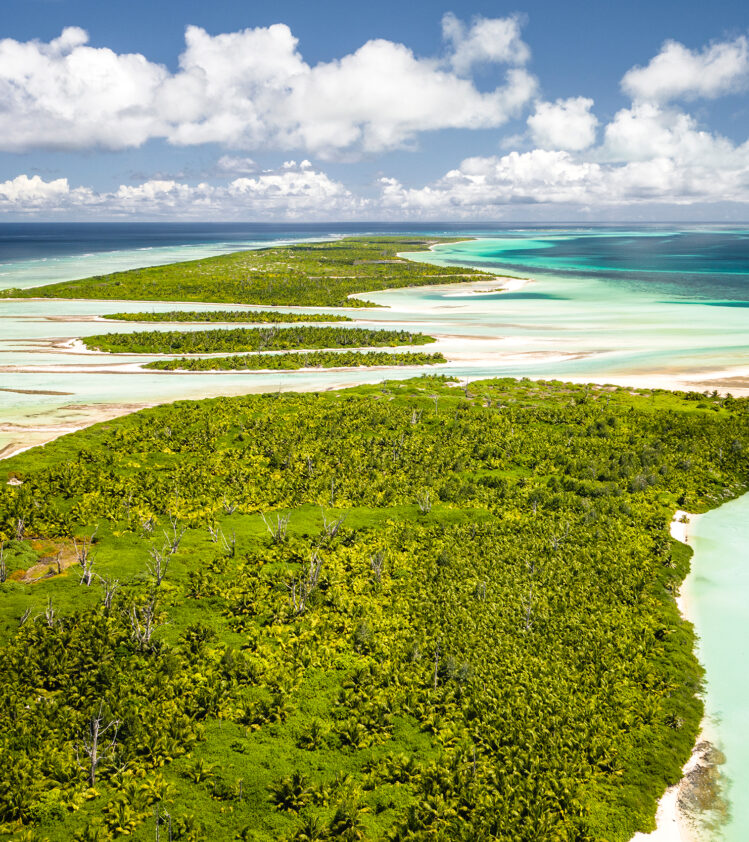 View Destination
View DestinationFarquhar Atoll
One atoll with a vast lagoon surrounded by nine islands.
-
Amirante Islands
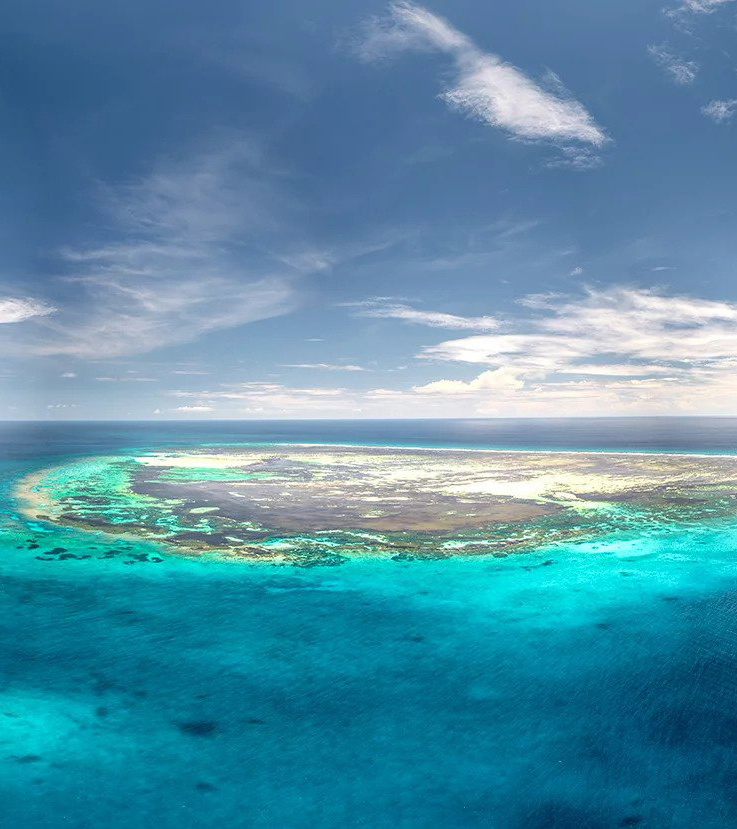 View Destination
View DestinationAmirante Islands
African Banks, Remire Reef, St Joseph’s Atoll and Poivre Atoll.
-
Providence Atoll
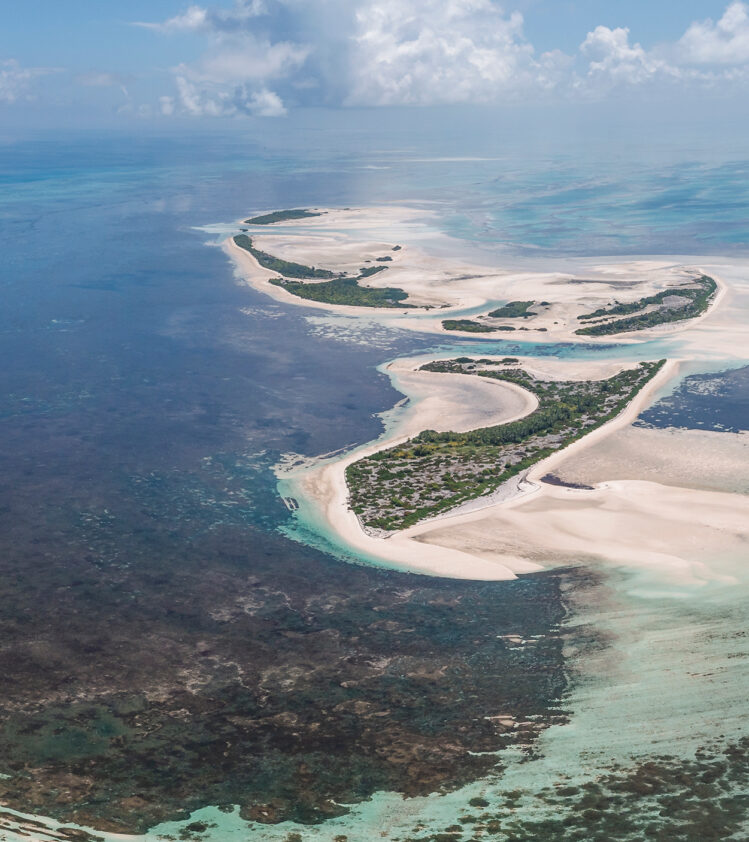 View Destination
View DestinationProvidence Atoll
One vast atoll with a shallow lagoon, sand banks, flats and channels.
Make your triggerfish fly fishing dream come true
Turn your fly into a fish’s ultimate temptation. The Seychelles, with its 115 islands and deserted atolls, ideal weather and warm Indian Ocean waters, is renowned for being home to some of the world’s richest fishing grounds. You don’t even have to venture too far to break fishing records!
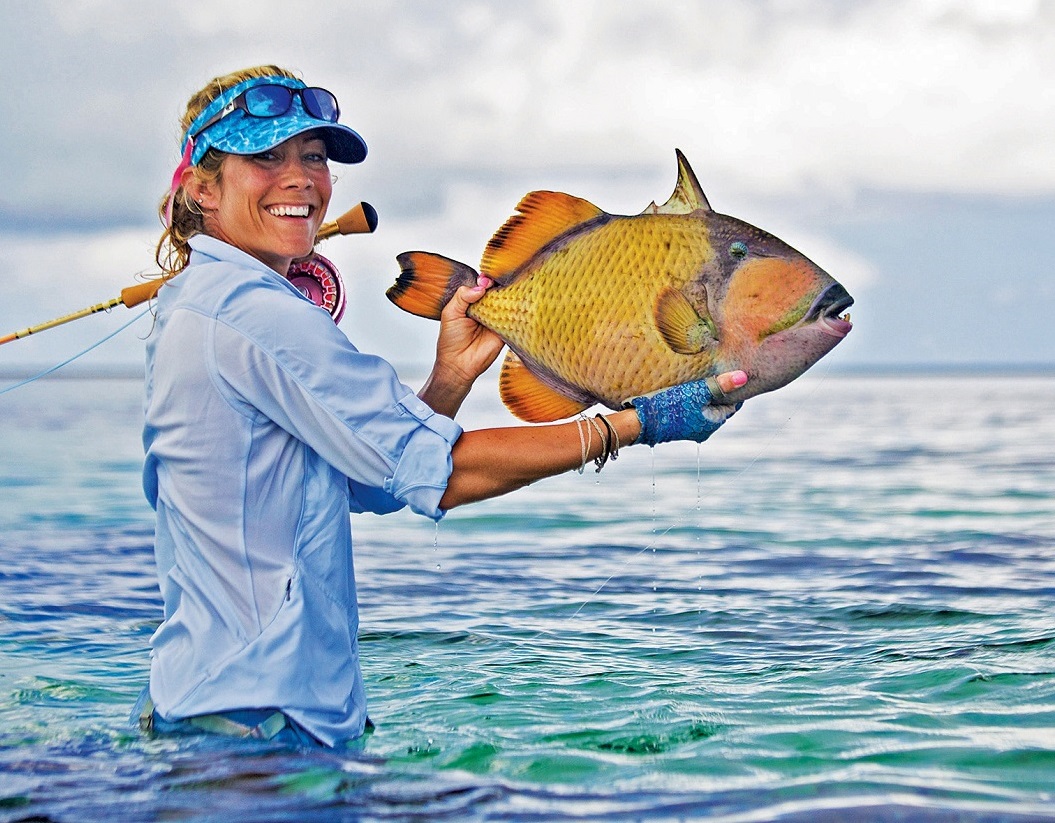
Highlights
- Home of the world's best fly fishing
- Unique, bespoke trips to suit your needs
- Located in the pristine remote outer islands of the Seychelles
- Luxury accommodation and exquisite food
- Unrivalled professional guides
- Some of the richest fishing grounds in the world
Latest Fly Fishing Blog Posts
-
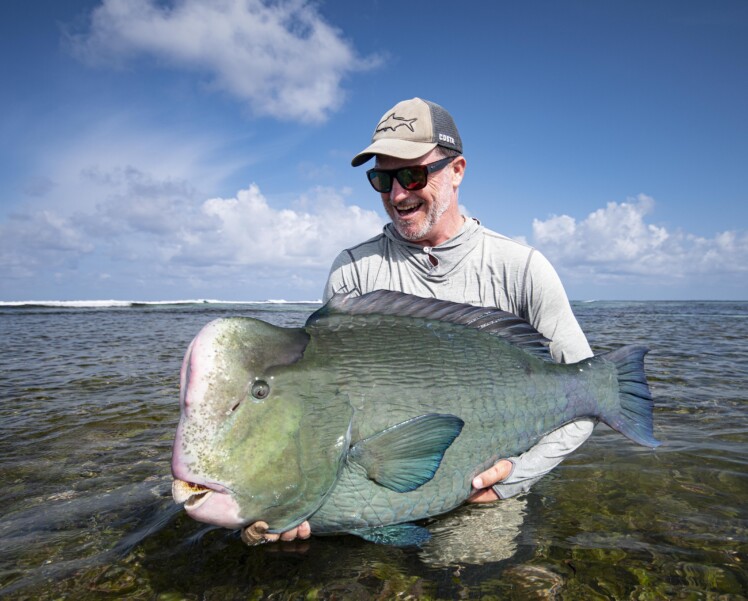
OPENING WEEK – PROVIDENCE ATOLL (22 – 29 JAN 2023)
Read More -
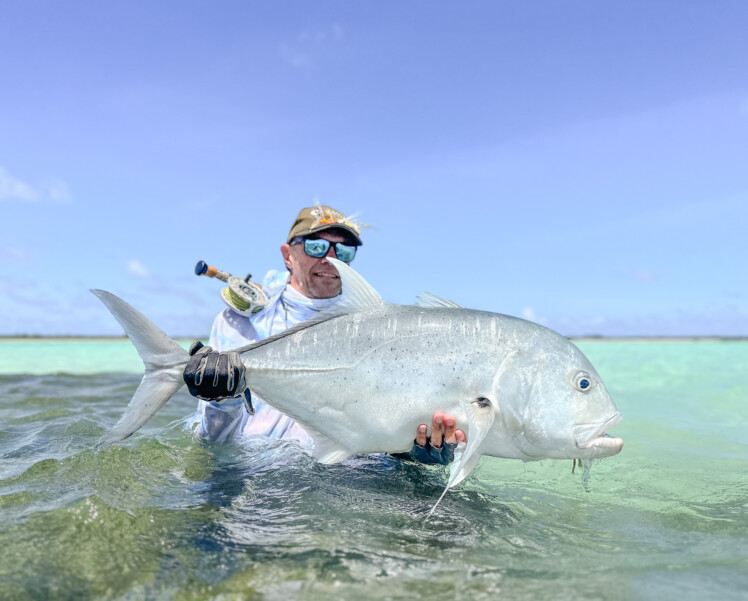
FARQUHAR ATOLL FLY FISHING REPORT (18 – 25 JAN 2023)
Read More -

ALPHONSE ISLAND FLY FISHING REPORT (14 – 21 JAN 2023)
Read More
OTHER POPULAR FLY FISHING SPECIES AT ALPHONSE FISHING CO™
Join our fishing community
Join our community to get regular updates about our fishing adventures, guide updates and special offers.
